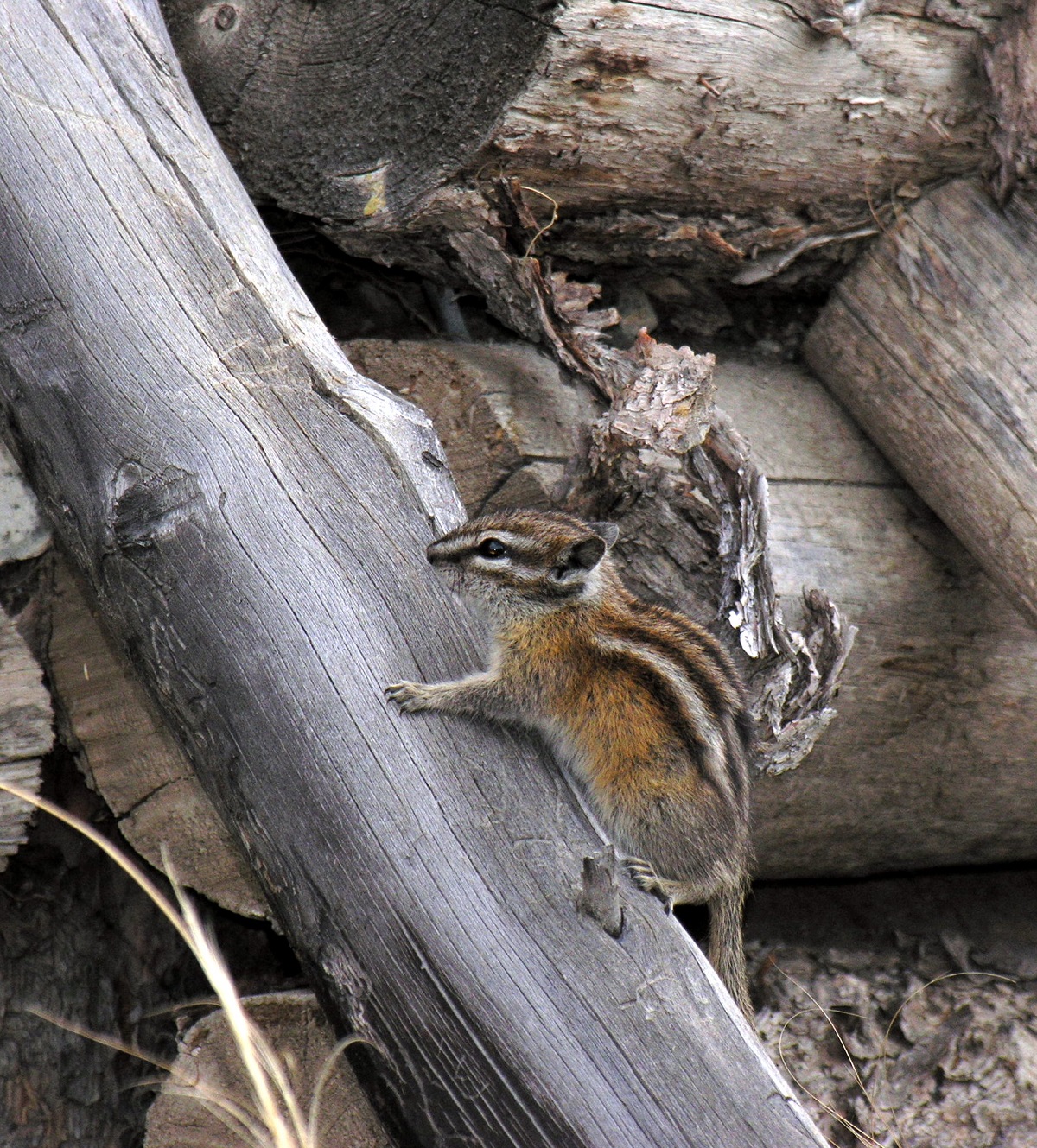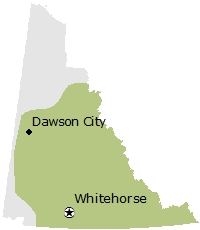
Name
- Common name: Least Chipmunk
- Scientific name: Neotamias minimus
- Order: Rodentia
- Family: Sciuridae
Also known as
Chipmunk
Viewing opportunities
- Look for the Least Chipmunk darting about under shrubs and around logs, or high-tailing it across roads and highways.
- You can also hear them chitter at you as walk in the woods.
Description
- Small squirrel-like rodent.
- Grey and reddish-brown on the sides and greyish-white on the belly.
- 3 dark lines with white in between along the face.
- 5 black stripes with brown edges and white in between along the back.
- Tail is orange-brown.
Fast facts
- Length: 20 cm
- Weight: 50 g
- Lifespan: 2 to 3 years
- Predators: Hawks, owls, and every carnivore from weasels to bears
- Habitat: Boreal forest
Conservation status
- Yukon: S5 (Secure)
- Global: G5 (Secure)
Yukon population estimate
Not determined.
Behaviour
Chipmunks are strictly diurnal spending most of their days in a hectic foraging state. From April to October they collect food and store it in their burrows for the long winter. Chipmunks are food-storing hibernators meaning they store food in their burrows to use as energy during winter hibernation. During hibernation, they will cycle through periods of inactivity, called torpor, and periods of activity where they will eat stored food. This cycle is repeated until spring arrives and fresh food is available once again.
Diet
Berry seeds, rosehips, grasses, sedges, insects, eggs and occasionally nestlings.
Distribution

Sights and sounds
env-least-chipmunk-audio.mp3
Least Chipmunk chirping.

Chipmunk track, front: 1.3 x 1 cm.
Chipmunks and people
- Chipmunks are notorious for raiding storage sheds and campsites.
- Most people find these spunky seed-gatherers hard to resist and enjoy their lively antics.